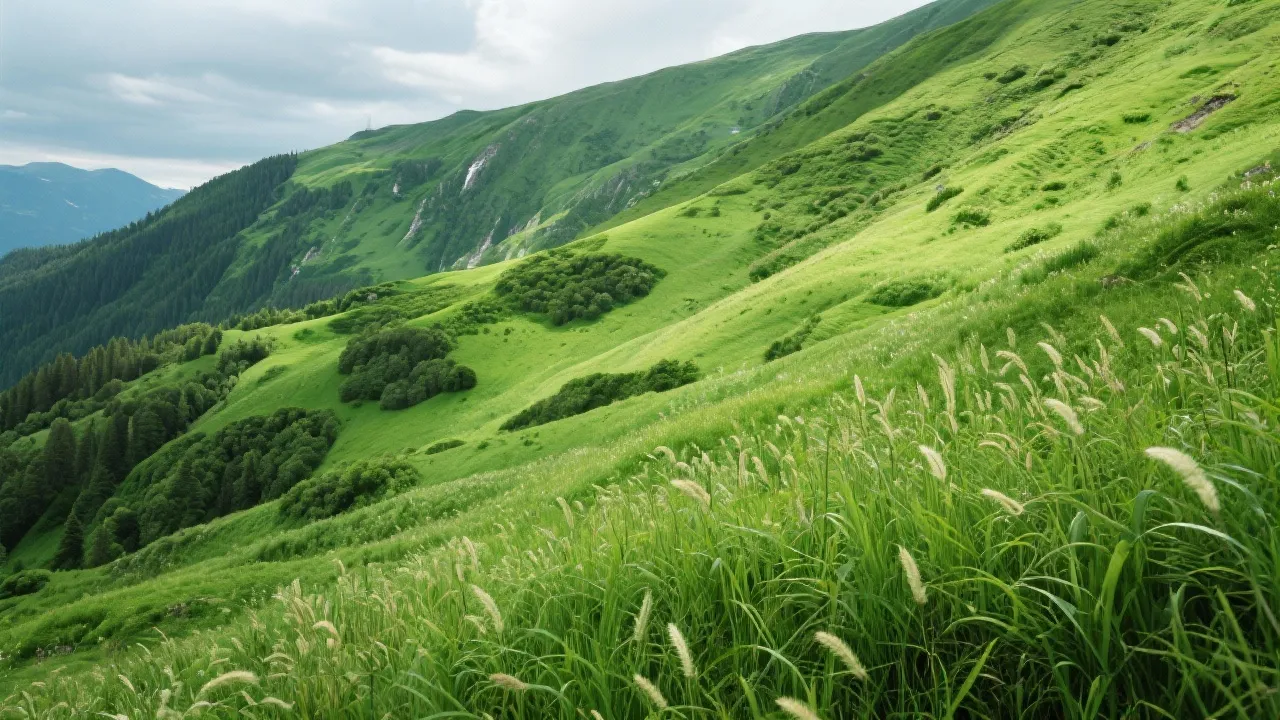Discovering the Zanc Poa Grasses
Zanc Poa grasses hold a significant spot in the biodiversity of grass species, renowned for their resilience and versatility. These grasses thrive in various environments and have unique attributes that make them both ecologically important and valuable for landscaping. This article delves into the characteristics, ecological benefits, and the potential uses of Zanc Poa grasses from the perspective of an industry expert.

Introduction to Zanc Poa
Grasses of the genus Zanc Poa represent a fascinating area of study in botany, offering a glimpse into the world of resilient plant species adapted to diverse habitats. Recognized for their ecological significance, these grasses play a pivotal role in maintaining ecosystem balance and are increasingly gaining attention for their adaptability and utility in landscaping and soil conservation. The study of these grasses not only enriches the scientific community’s understanding of plant adaptability but also advocates for sustainable practices that can be applied in various environmental contexts.
Characteristics of Zanc Poa
Zanc Poa grasses exhibit a variety of features that make them stand out among other grass species. They are perennial by nature, primarily adapted to temperate climates, with a remarkable ability to withstand varying environmental conditions. Their root systems are extensive, enabling them to survive in dry regions while effectively stabilizing the soil. The leaves are typically narrow and fibrous, a trait that aids in reducing water loss, making them an excellent choice for areas susceptible to drought. These characteristics not only contribute to their survival but also enhance their ecological roles and contribute to their overall effectiveness in landscaping.
Physiological Adaptations
The physiological characteristics of Zanc Poa grasses are particularly interesting. These grasses possess specialized structures, such as the aerenchyma tissue, which allows them to adapt to varying soil moisture levels. This adaptation is crucial during prolonged dry spells when water is limited. The ability to alter the leaf orientation in response to light and humidity also aids in optimizing photosynthesis while minimizing water loss. Furthermore, Zanc Poa grasses can engage in a process known as CAM (Crassulacean Acid Metabolism) photosynthesis during extreme drought conditions, enabling them to sustain growth where many other plants would fail.
Ecological Importance
The ecological benefits of Zanc Poa are profound. These grasses serve as a crucial habitat for many species of insects and small animals. Their dense root networks enhance soil structure, reducing erosion and increasing nutrient cycling. Additionally, they play a vital role in improving air quality by sequestering carbon dioxide, thus contributing to the mitigation of climate change impacts. The ecological diversity supported by Zanc Poa also extends to providing food and shelter for various native bird species and pollinators, which are often at risk due to habitat destruction.
Symbiotic Relationships
Zanc Poa grasses engage in symbiotic relationships with various microorganisms in the soil. These relationships are particularly important to nutrient uptake and soil health. Mycorrhizal fungi, for instance, form associations with the roots of Zanc Poa, extending the root system's reach and enhancing the plant's ability to absorb water and nutrients. In return, the fungi receive carbohydrates from the plant, fostering a mutually beneficial relationship that significantly boosts soil fertility.
Applications in Landscaping
Due to their resilience and aesthetic appeal, Zanc Poa grasses are increasingly utilized in landscape architecture. Their ability to thrive in less-than-ideal soil conditions makes them a go-to option for challenging landscaping projects. Landscapers favor these grasses not only for their hardiness but also for their visual texture, which adds a naturalistic element to gardens and public parks. These grasses can be used in a variety of landscape applications, from urban green spaces to rural conservation efforts, demonstrating their versatility.
Water Conservation Practices
The use of Zanc Poa in landscaping aligns well with modern water conservation practices. As water scarcity continues to be a pressing global issue, incorporating drought-resistant plants like Zanc Poa into public parks, residential gardens, and commercial landscapes becomes vital. By utilizing these grasses, landscape architects can create aesthetically pleasing environments that require minimal irrigation. Furthermore, they can contribute to reducing runoff and increasing groundwater recharge, making Zanc Poa an essential component of sustainable landscaping strategies.
| Feature | Description |
|---|---|
| Perennial Nature | Zanc Poa is a perennial, suggesting its capability to return year after year. |
| Drought Resistance | These grasses possess mechanisms to survive extended periods of water scarcity. |
| Soil Stabilization | The extensive root system helps in preventing soil erosion. |
| Carbon Sequestration | Zanc Poa aids in capturing carbon dioxide, thereby reducing greenhouse gases. |
| Aesthetic Versatility | The visual texture adds a naturalistic element attractive to landscape designers. |
| H Habitat for Wildlife | Zanc Poa provides food and shelter to various insects and animals, enhancing biodiversity. |
FAQs
- What climates are top suited for Zanc Poa?
Zanc Poa thrives in temperate climates though they are adaptable to various conditions.
- Can Zanc Poa be used for ornamental purposes?
Yes, they are often favored for their visual texture and durability in ornamental landscaping.
- How does Zanc Poa contribute to soil health?
The grasses improve soil structure and nutrient cycling, enhancing overall soil fertility.
- Are there any medicinal uses for Zanc Poa?
While primarily recognized for their ecological and landscaping benefits, traditional practices may use related grass species for medicinal purposes. However, specific uses of Zanc Poa would require further scientific evaluation.
- Can Zanc Poa grow in urban environments?
Yes, Zanc Poa is well-suited for urban landscaping, as it can adapt to poor soil conditions and is resistant to many urban stressors, including pollution and foot traffic.
Future Research and Conservation Efforts
Given the critical role of grasses like Zanc Poa in ecosystems, ongoing research is crucial to understand their full potential. Scientists are exploring genetic improvements to enhance their drought resistance and adaptability to climate change. Conservation efforts are also necessary to protect Zanc Poa habitats from urbanization and land conversion, which threaten diverse grassland ecosystems. By combining plant ecology with progressive landscape architecture, it is possible to develop sustainable environments that benefit both urban and rural communities.
Conclusion
Understanding the importance of Zanc Poa not only enriches our knowledge of plant biodiversity but also opens up numerous possibilities for ecological and commercial applications. Whether for environmental conservation or ornamental landscaping, the unique attributes of Zanc Poa make it a valuable asset. The increasing recognition of these grasses amidst rising environmental concerns emphasizes the need for further exploration and integration into conservation strategies and sustainable practices. Through education, advocacy, and research, Zanc Poa can become a cornerstone in efforts to create resilient ecosystems that preserve the planet for future generations.










